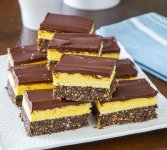GaffleBab
Jr. Member
- Aug 4, 2017
- 66
- 106
- Detector(s) used
- Minelab Equinox 800
Garrett AT MAX International
Teknetics Delta 4000
- Primary Interest:
- Metal Detecting
I found this on a beach located on Vancouver Island in BC, Canada. Have previously found smaller lead musket balls at this location as well as a variety of great finds as I have spent 60+ hours back and forth here and it is at the point that I dig anything repeatable if I want to find anything here and well I got this...
Looked online and found some information but hoping that someone on here who is very knowledgeable in this type of stuff might be able to give me a positive ID. Thank you for looking (:

Looked online and found some information but hoping that someone on here who is very knowledgeable in this type of stuff might be able to give me a positive ID. Thank you for looking (:














